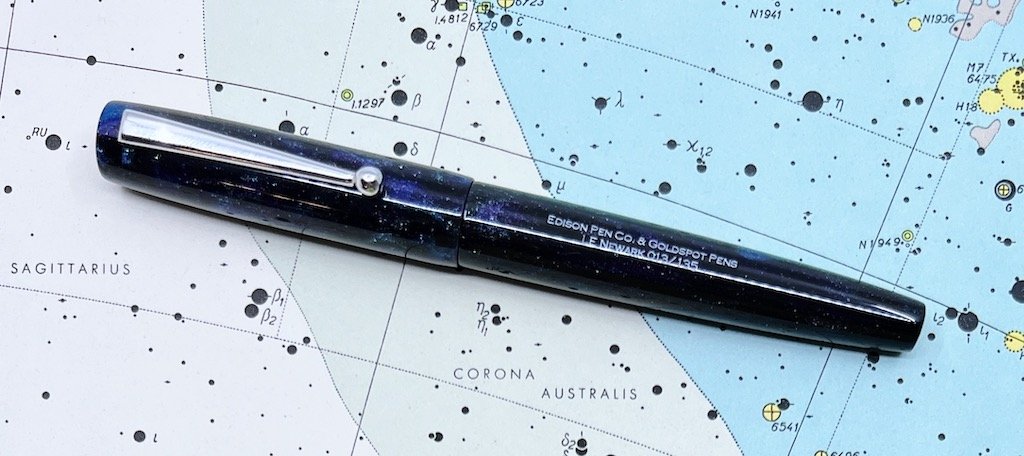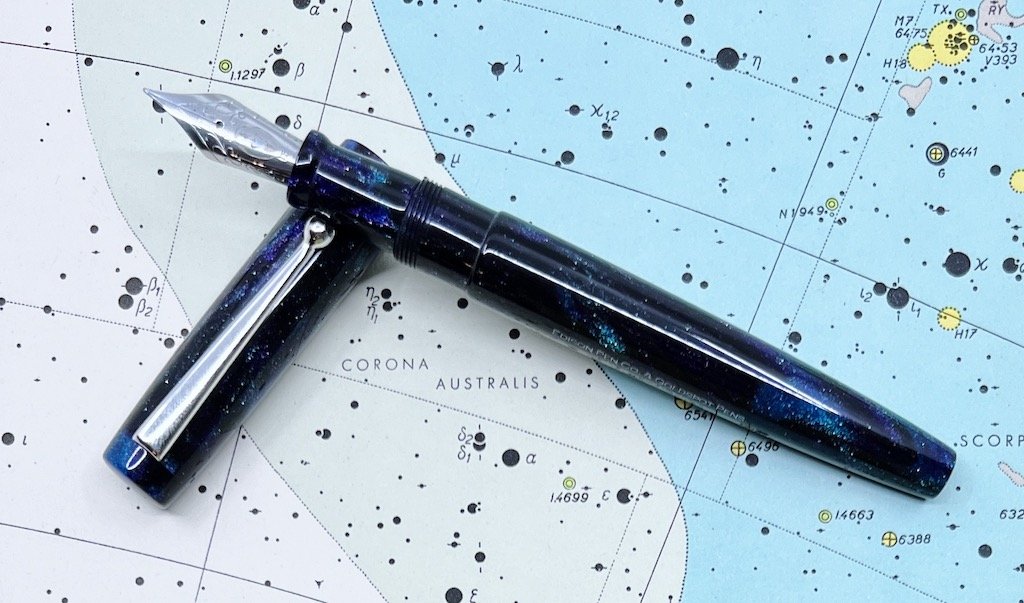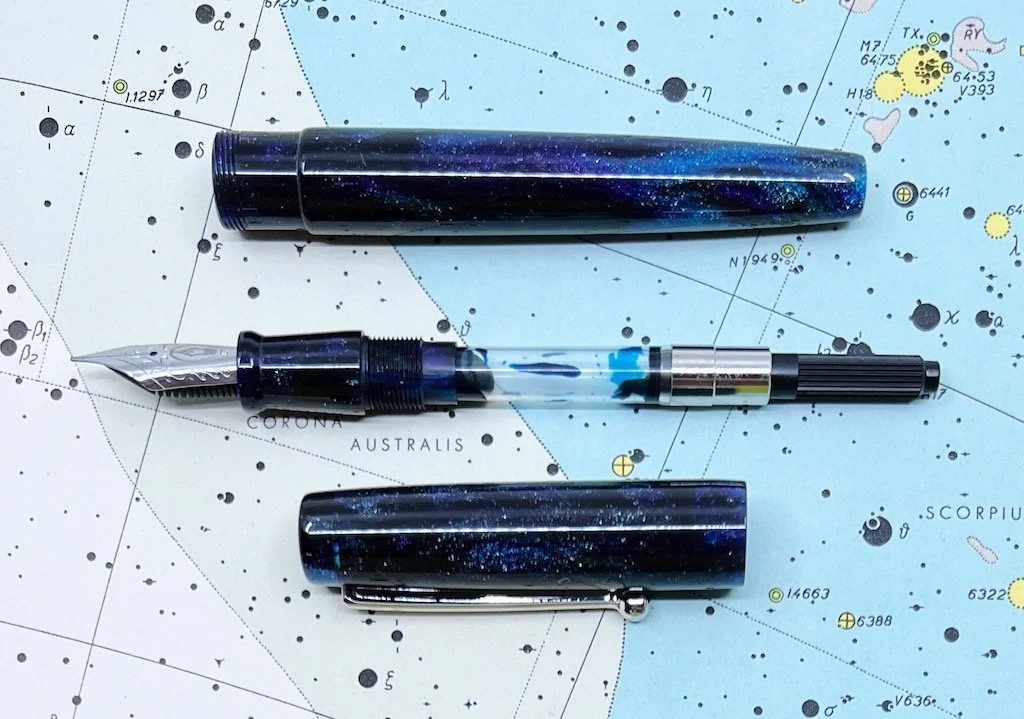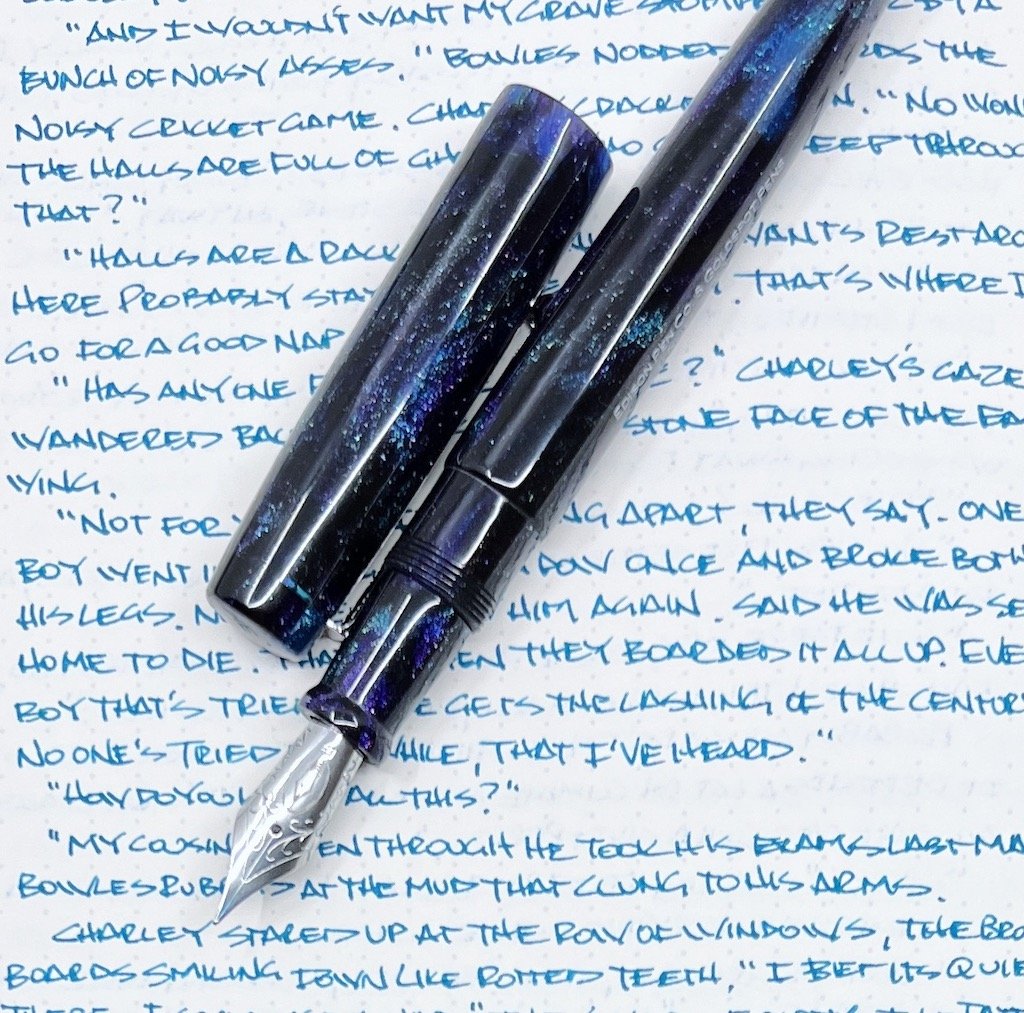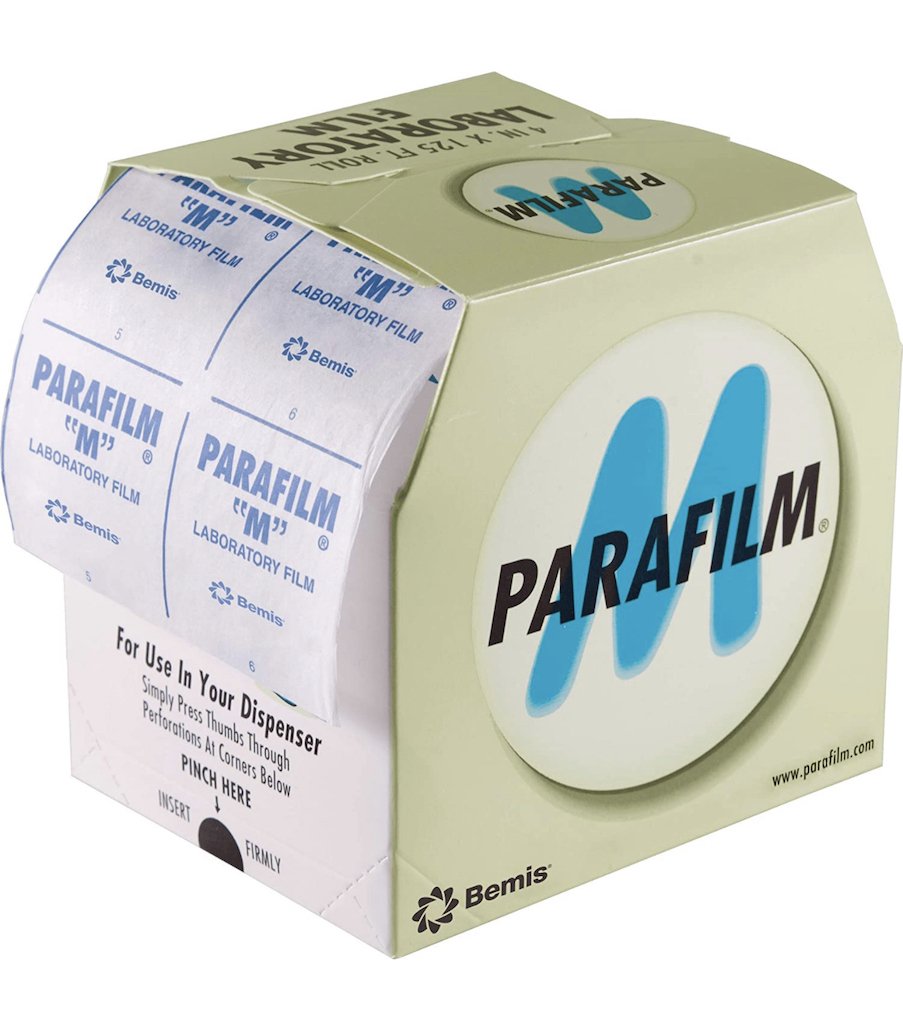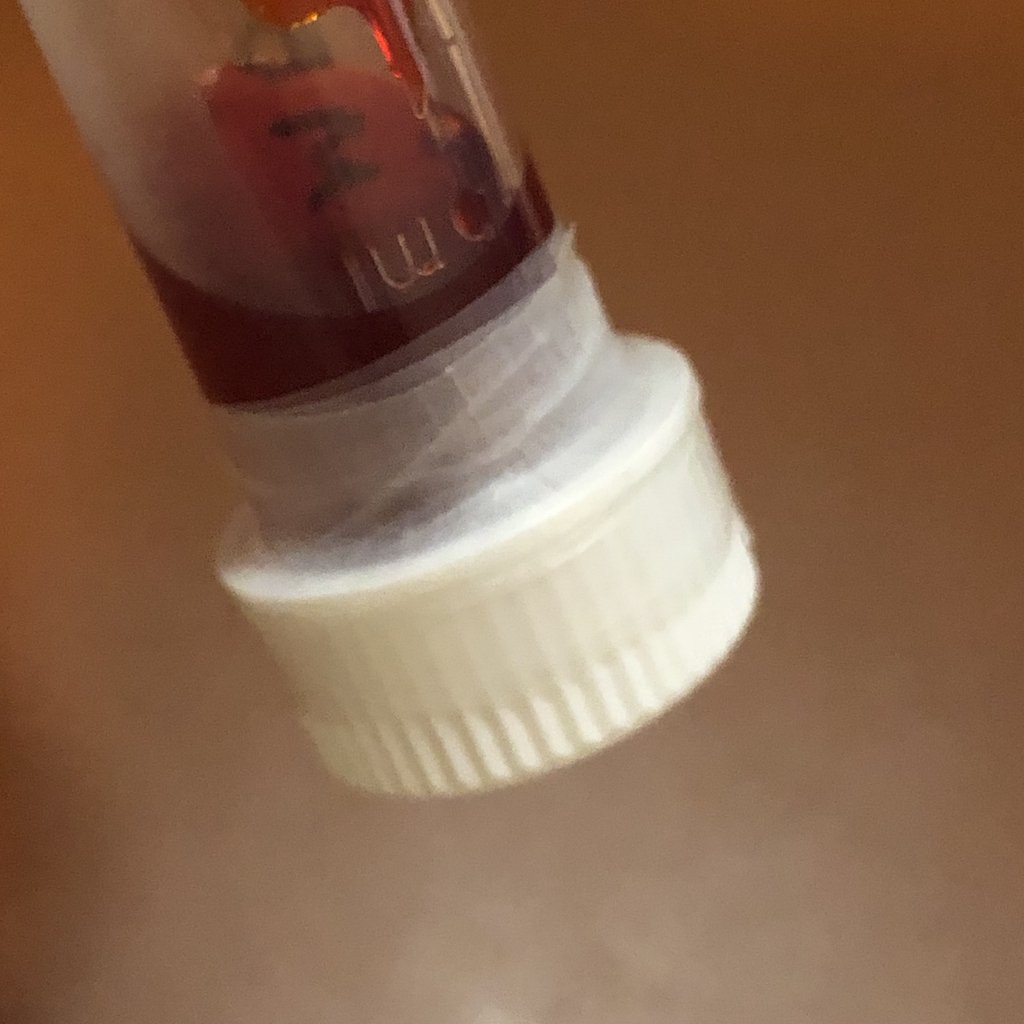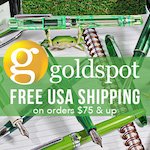I’m trying to place the Edison x Goldspot Pens Newark Orion Nebula in context with all of the other fountain pens that are new to me this year. Why? Because I think it is my favorite.
For starters, the Goldspot exclusive Newark model, made by Edison Pen Co., reminds me of one of my favorite Edison models, the Beaumont. The Beaumont is a smaller, lighter fountain pen, and the Newark is designed along similar lines, with a touch more barrel length and a different grip section design than its pen partner.
In my hand, this leads to a perfect writing experience. I talk about this with other pen models, in that the design allows the writing instrument to morph into an extension of your hand when writing. Not every pen I own feels this way. That’s ok, I love pens that don’t fit this description as well. But the ones that do are in a different category. I know they are great from the moment I pick them up.
This shape isn’t for everyone. My tastes lie in the small and lightweight realm. Others have a better writing experience with big and bulky pens. The design, shape, and weight of the pen play into how enjoyable your writing experience can be.
I’m writing a lot right now, and the Newark has been a workhorse. It is fitted with a stock steel EF Jowo nib, and inked with Van Dieman’s Devil’s Kitchen - a dark turquoise ink.
Why this ink? I’m so glad you asked!
Have you seen this barrel material? I had wanted to try the Newark model since launch for all of the reasons listed above. And once I saw it available in this Diamondcast Orion Nebula? Insta-buy.
Diamondcast is a product from McKenzie Penworks, who designed this material in conjunction with Edison and Goldspot exclusively for this pen. The depths of space are explored, with purple and turquoise swirls making me wonder if there really is life out there somewhere.
Ok, maybe that’s a little much. But this material is awesome, and I love using this pen.
With the Diamondcast material, this limited edition Newark is $225 at Goldspot. Two other standard acrylic Newark models - DC Battery Blue and AC High Voltage Green - are priced at $169. Is the Diamoncast material worth the upgrade? To me it is, but it is admittedly a sizable increase over two other great looking materials in their own right. All of the prices seem in line with their respective offerings.
While the material is a knockout, that doesn’t mean a thing if the pen isn’t enjoyable to use. I see the Newark being a workhorse model for me, and one I may even look at adding another of down the line if the design is as inspiring as this one.
(I purchased this product from Goldspot using my 10% off discount code. Do you need the code for your next purchase? Email me! .)
Enjoy reading The Pen Addict? Then consider becoming a member to receive additional weekly content, giveaways, and discounts in The Pen Addict shop. Plus, you support me and the site directly, for which I am very grateful.
Membership starts at just $5/month, with a discounted annual option available. To find out more about membership click here and join us!
Edison Beaumont (top) vs. Newark

